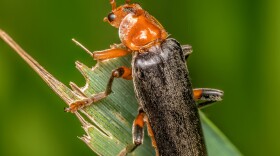You’re outside, observing insects (of course), and come across a cute, fuzzy ant that’s really fast. While it’s tempting to try and catch it for a better look, you might want to think twice. Chances are you’ve found a velvet ant.
With around 435 species of velvet ants found in North America, they can be found in all of the lower 48 states, but are most commonly found in the dryer areas of the south and west.
While some species are white, creamy, or black in color, most velvet ants are red or orange …a coloration that’s a warning.
While males are unable to sting, the females can pack an incredibly painful punch …so painful that some species have been given the name “cow killers”, with a sting that’s reportedly able to kill a cow. While that’s not true, they are definitely a species to admire for their beauty, but not touch.
And while they look like an ant, most people are surprised to learn that they are actually wasps. Females are wingless and a bit fuzzier. The males have wings and in some species are much larger.
Velvet ants tend to be found in pastures, fields and other areas with sandy soils. While the adults feed mostly on nectar, their developing young are parasites of primarily bees and wasps that nest in the ground.
Just like other species that have a painful defense, velvet ants are not out to get you. In fact, many species will make a squeaking sound to let you know you are getting too close. Their way of saying, “Hey, back off!”





